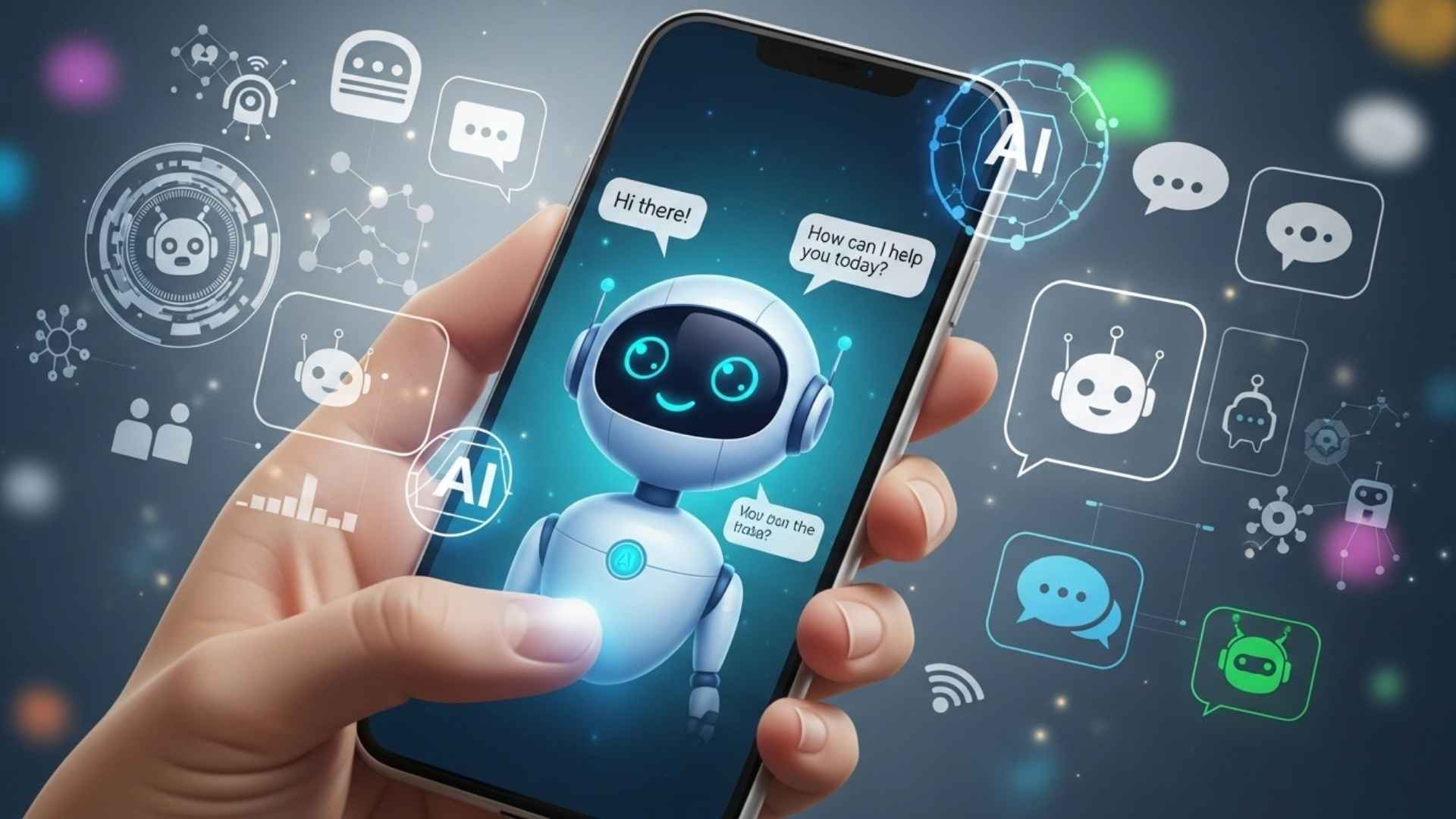An AI assistant (or digital assistant) is a software application that uses artificial intelligence (AI) technology. They can understand commands we speak in ordinary language and perform tasks.
AI assistants perform tasks that a human secretary would normally perform, such as transcribing what we say, reading texts or emails aloud, looking up phone numbers, scheduling appointments, making phone calls, and reminding us of important matters.
Popular AI assistants now include Amazon Alexa, Apple Siri, and Google Assistant.
Types of AI Assistants
When we hear the term AI assistant, most of us think of software. However, the term also refers to human employees who work from home, such as secretaries and office assistants, who are contracted to perform administrative tasks.
In addition, with the development of chatbots and generative AI in the technology industry, many types of AI assistants have emerged. However, it is important to note that they serve different purposes for users and have different levels of assistance.
Today’s AI assistants can be broadly categorized into three main types based on their capabilities and usage:
- Chatbots: Chatbots are computer programs that communicate with users via text on websites, social networks, and messaging apps. Their primary purpose is to help customers, answer questions, or initiate conversations. These chatbots use natural language processing (NLP) and machine learning (ML) techniques to understand our speech and provide appropriate responses. Their performance improves over time through interactions.
- Conversational Agents: This is a step up from text-only chatbots. Conversational Agents can communicate in a human-like manner using both text and voice. These systems are designed to understand complex language patterns. They can identify the user’s true intentions and provide appropriate responses in each situation. They can handle more complex tasks and provide a more natural user experience.
- Advanced AI Digital Assistants: This type is the most advanced, and can perform a variety of tasks across multiple devices and platforms. They usually interact with the user based on voice. These AI digital assistants are integrated with a wide range of services and applications, allowing users to quickly access information, control smart home devices, or manage their personal calendars.
A subset of AI assistants are generative artificial intelligence (GenAI) assistants, which are rapidly gaining popularity as they help with content creation in the workplace. OpenAI’s ChatGPT and other similar systems fall into the GenAI category.
These GenAI assistants can perform tasks such as generating text for emails or reports, creating images for articles, and compressing existing text to make it clearer and more concise.
AI Assistant Devices and Technology
AI assistants are mostly cloud-based programs, requiring devices and applications connected to the internet to work. These AI assistants can be used on a variety of platforms, including smartphones, smart speakers, or instant messaging apps.
In addition, AI chatbots that use GenAI (generative artificial intelligence) technology — such as Amazon Lex, ChatGPT, and Google Cloud Dialogflow CX — are also gaining popularity due to their ability to generate human-like responses when spoken to in text.
Today, the most popular AI assistant technologies and the devices that use them are as follows:
- Amazon Alexa: A cloud-based voice service that is primarily used by Amazon Echo speakers. Users can command them by saying “Alexa,” and it has become capable of performing tasks ranging from simple questions to GenAI-based understanding that can turn on the air conditioner by simply saying “It’s hot in here.”
- Apple Siri: A voice-controlled personal AI assistant that comes pre-installed on Apple devices, including iOS and macOS. It uses artificial intelligence-based voice recognition technology.
- Google Assistant: An AI voice assistant software developed by Google for Android devices. It can answer questions, adjust device settings, and schedule important tasks.
- Microsoft Copilot: An AI assistant built into Windows 11 that can be used in all Windows apps. It provides a service that allows users to interact naturally with the Windows OS through AI-powered speech.
- OpenAI ChatGPT: It can generate human-like responses to various queries and generate a wide range of content. For paid users, it offers an advanced voice mode that allows you to speak without typing, and it can speak in over 50 languages.
- Samsung Bixby: Samsung’s AI assistant is primarily used in mobile phones, but is also included in some smart refrigerators. It can send messages, tell the weather by location, set meeting reminders, and read the news.
The technologies that enable AI assistants to work require one very important factor. And that is a lot of data.
This data is what feeds AI systems like machine learning (ML), natural language processing (NLP), and speech recognition.
Whether a user speaks to an AI assistant or interacts with it, the AI program uses complex algorithms to learn from that data. Over time, AI has improved to the point where it can better predict and more accurately meet the needs of the user.
Key tasks that AI assistants can perform
AI assistants can perform many simple tasks that users do every day, including:
- Adding tasks to a calendar.
- Providing searchable information in a web browser.
- Controlling and checking the status of smart home devices such as lights, cameras, and thermostats.
- Making and answering phone calls.
- Scheduling meetings and appointments.
- Writing and creating drafts of messages and emails.
- Creating images to include in reports and articles.
- Revising text to make it clearer.
- Conducting research.
- Converting audio from meetings to text instantly.
- Getting directions.
- Reading out news and weather conditions.
- Finding hotels or restaurants.
- Checking flight reservations.
- Play podcasts.
- Set reminders.
- Assist with workflow management.
- Assist with e-learning and training.
- Call an Uber or Lyft.
- Listen to music.
- Play games.
Privacy Concerns About AI Assistants
Some users are concerned about privacy when it comes to AI assistants like Amazon Alexa and Google Home. This is because these AI assistants require a lot of personal information to work.
The main problem is that these systems are constantly listening to respond to voice commands. Typically, they are designed to start recording only when the user says a trigger word (“Wake Word”). However, sometimes conversations and personal information are accidentally recorded without the user’s knowledge.
Companies that provide AI assistant services have privacy policies. These policies specify how each company will use and share users’ personal information. While most companies do not share personally identifiable information without the user’s permission, there are still concerns about how these voice assistant providers use and handle user data.
In addition to the privacy policies of service providers, here are some security precautions that users can take:
- Change the setting to sound when recording: Turn on Sound Notifications to alert the user when an AI assistant accidentally starts recording conversations. Echo and some Google devices are muted by default, so you should change this.
- Decline recording of commands and conversations: Opt out of saving old conversation records on systems like Amazon Alexa. However, be aware that even if you delete records, transcripts may still be available for review.
- Be extra careful when sharing confidential information: The best way to protect yourself is to avoid giving your voice assistant sensitive information, and the best way to protect yourself is to avoid giving it.
Experts recommend separating work and personal AI assistant profiles to improve privacy.
Currently, most AI assistants, including Alexa and Google Assistant, allow users to use multiple accounts. This system helps users separate their personal AI assistant from their work-related AI assistant.
With this separation, your personal information will no longer be mixed with work-related data, which will provide greater security.
Also Read: 10 Best AI Writing Tools to Boost Your Content in 2025
The Future of AI Assistants
AI assistants are evolving rapidly to provide more services to users. As voice recognition and natural language processing (NLP) technologies improve, the ability of AI assistants to understand and act on requests is also increasing.
As voice recognition technology continues to improve, the use of AI assistants will be increasingly embedded in business workflows.
As AI technology advances, AI assistants will become more human-like and will be able to provide personalized services to individuals. However, the widespread use of AI assistants has not yet overcome the privacy concerns associated with them.
Therefore, companies are being urged to address these concerns transparently in their policies to build user trust. The future of AI assistants may also be related to the Metaverse, and companies are exploring new ways to integrate these assistants into virtual reality environments.




